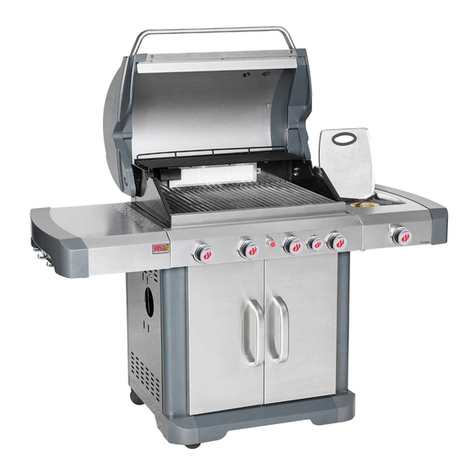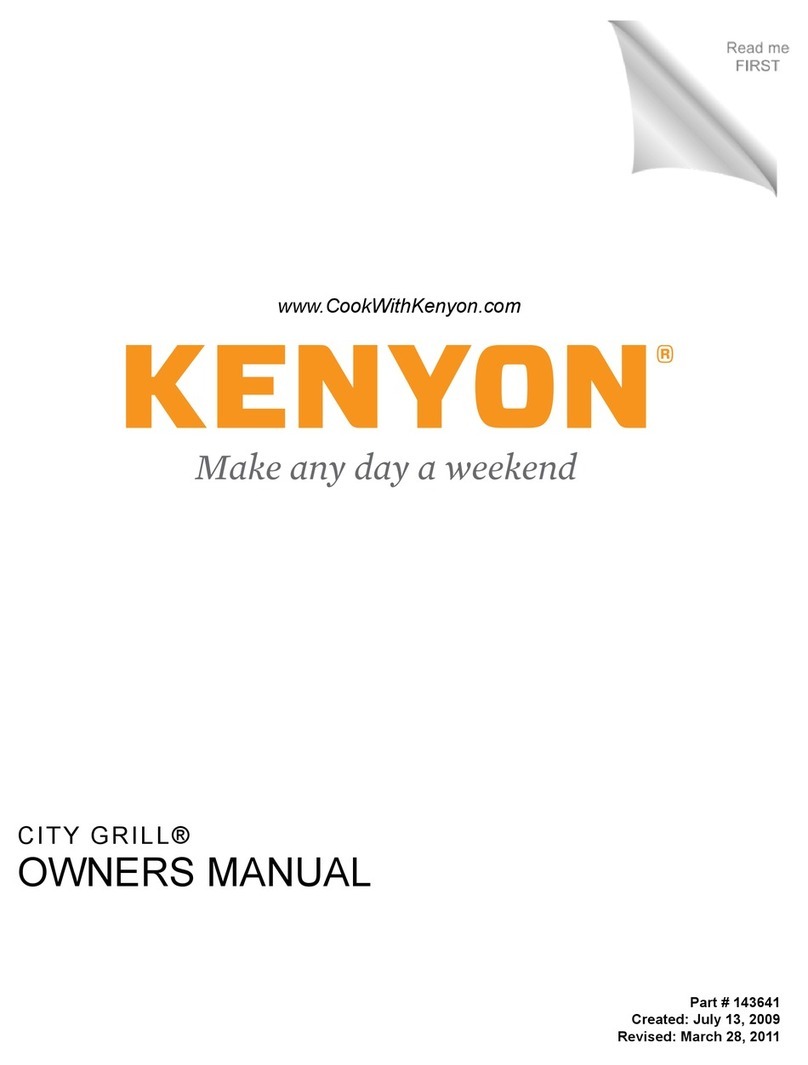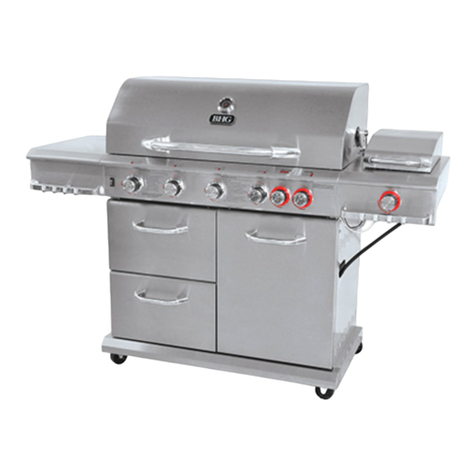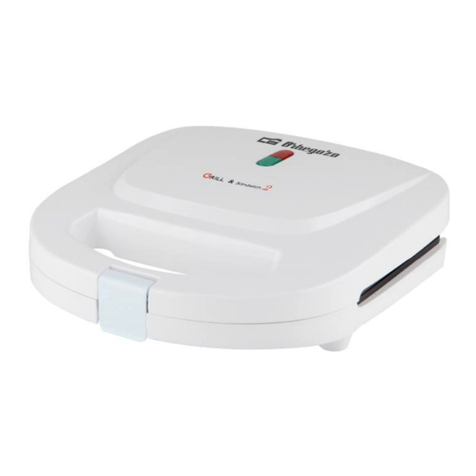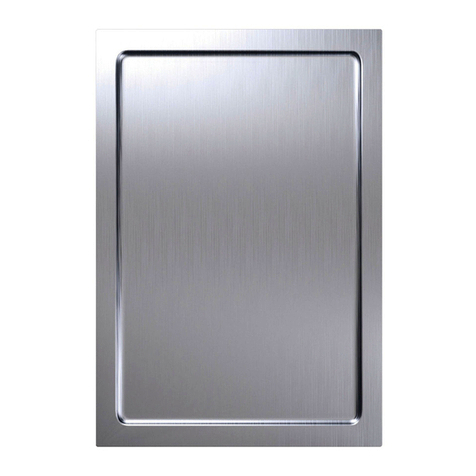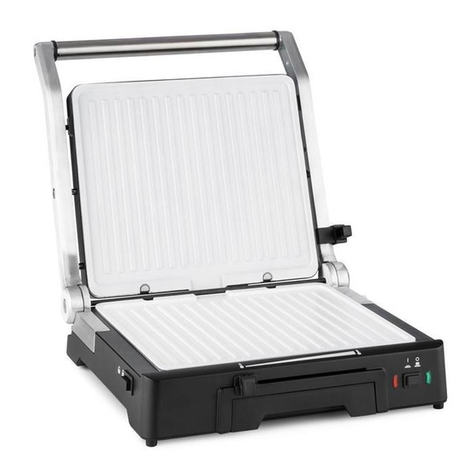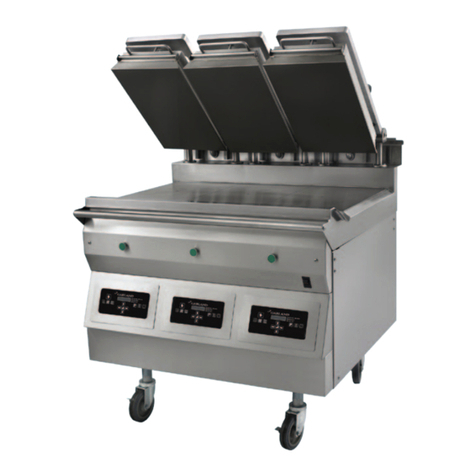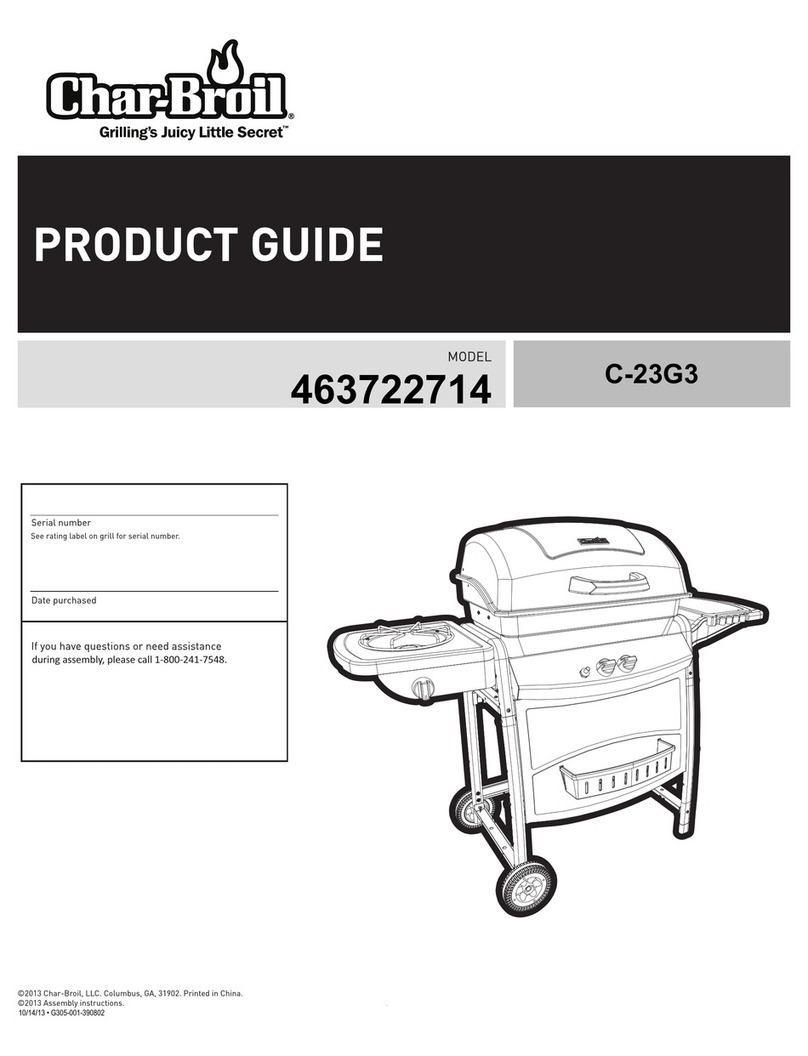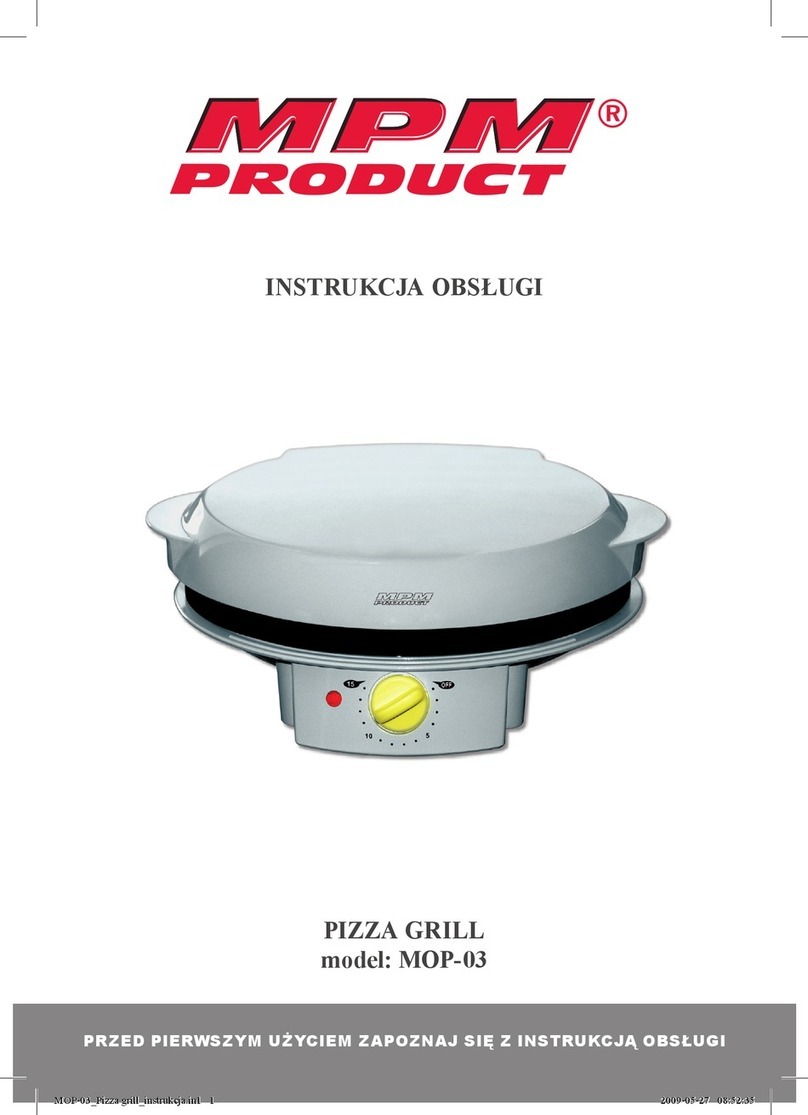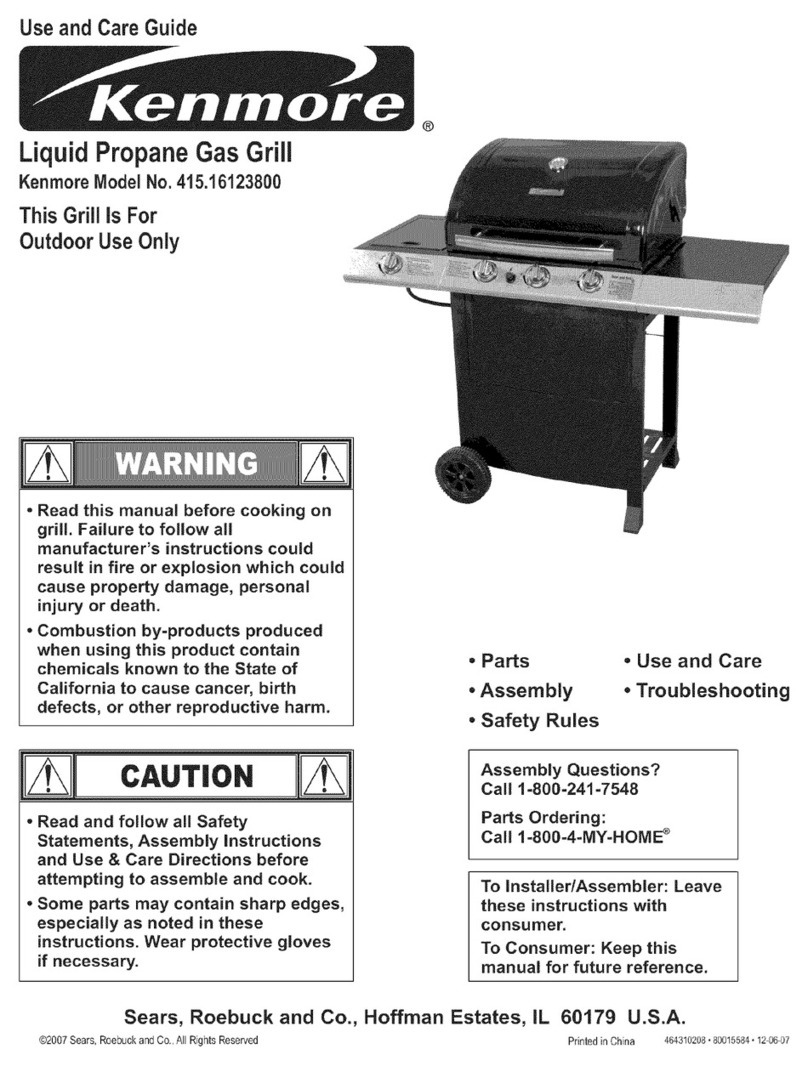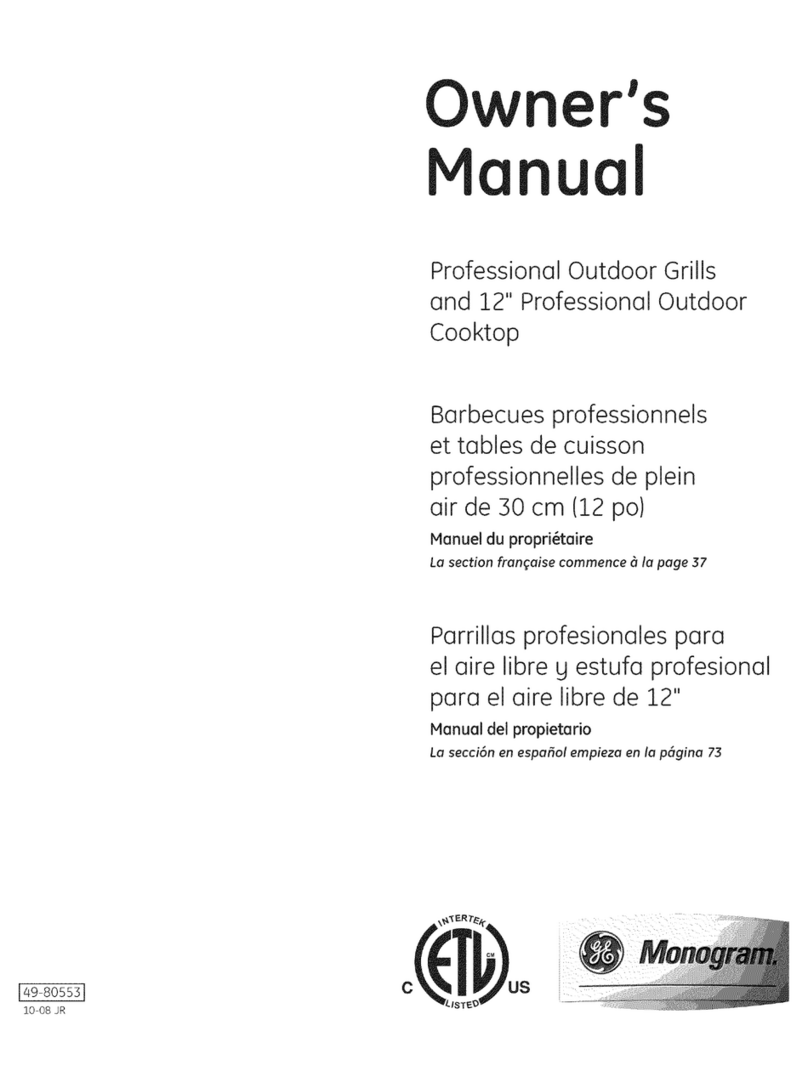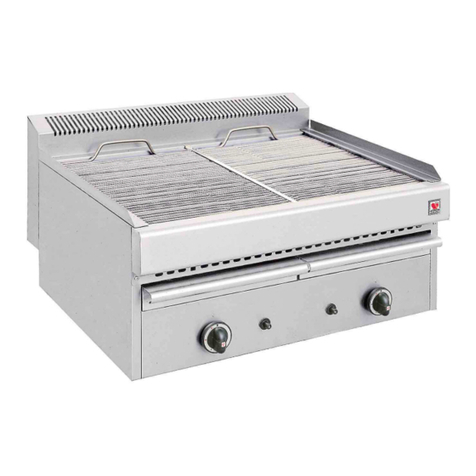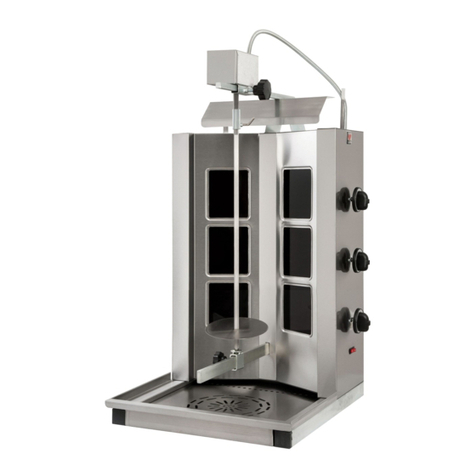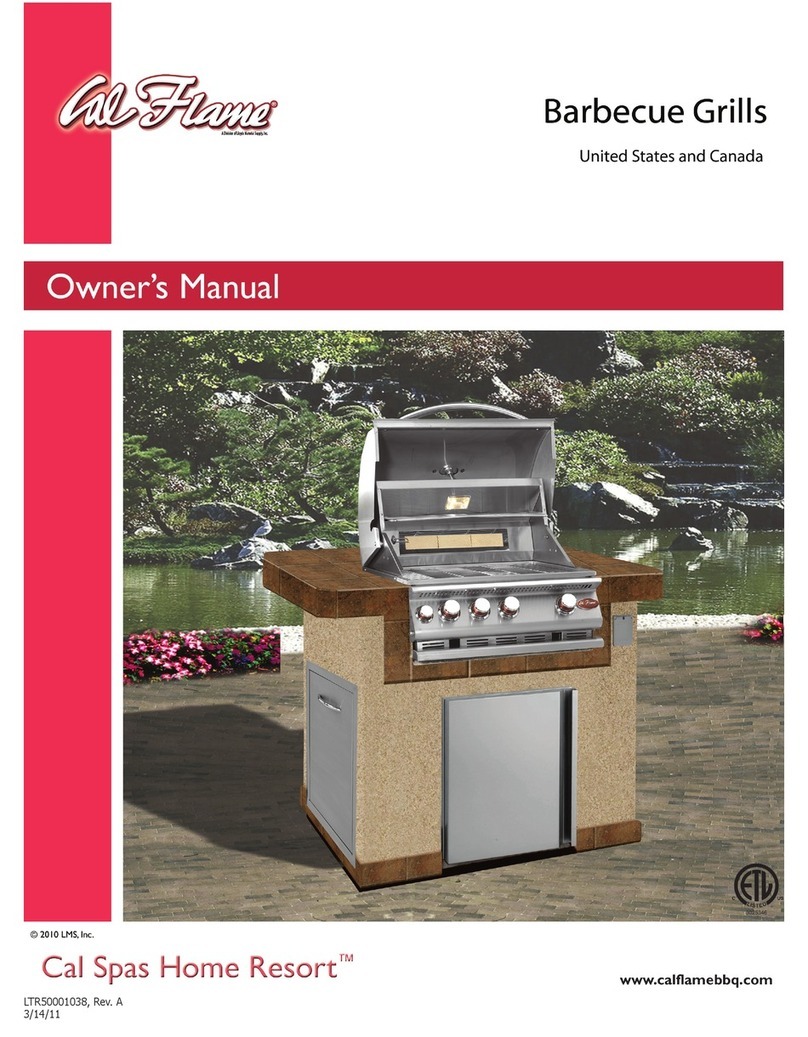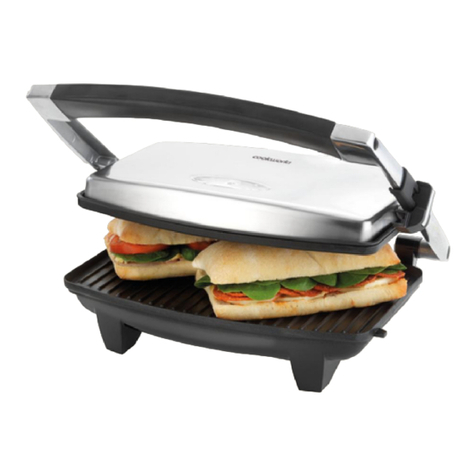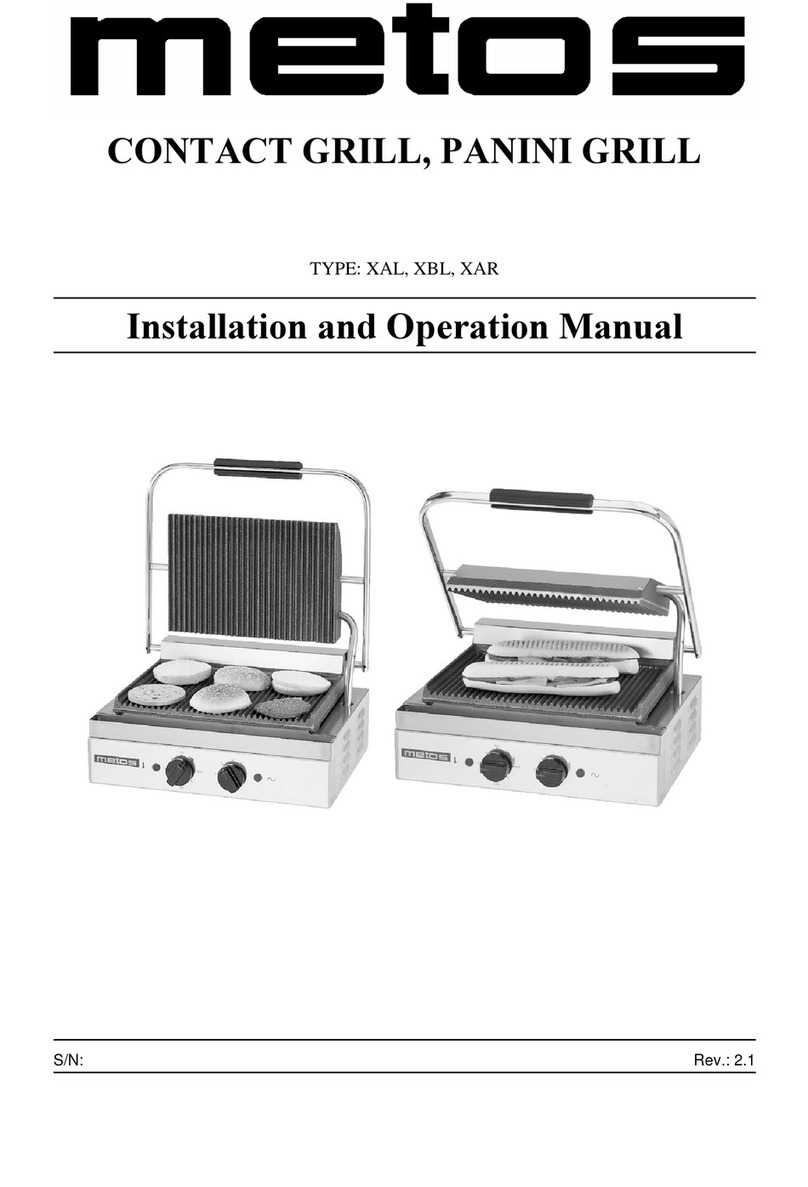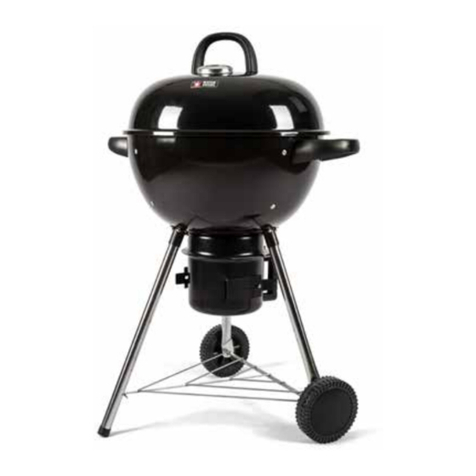
6
3.3 Positioning
Make sure there is enough space available to place the appliance and that the surface it stands on is
stable and level.
Make sure the appliance is level on the surface available. If necessary, regulate its height accordingly,
by adjusting the legs of the appliance.
Make sure that the volume of air required for combustion isn't obstructed in any way by objects around or
under the appliance and no flammable bottle is placed near it.
It is recommended always keeping a distance of at least 20 cm from the two side walls and rear wall and
the appliance especially if the adjacent walls are not protected with refractory sheets or fire-resistant
materials made (see Fig. 3B on previous page).
3.4 Gas connection to the network
Before connecting the appliance to the gas network make sure that:
•The present gas on the place corresponds to that for which the apparatus is predisposed: In If it is not
does not proceed with the connection. Regulate the appliance for the gas available following
instructions under 3.6.
•
The fixed part of the gas system is conform to the prescriptions established in the Building
Regulations in force in the Country. In particular, verify that the sections of the gas pipes guarantee a
supply that is sufficient for all of the gas heated appliances installed in the same premise avoiding
excessive pressure drops.
•
The gas bottle (if present) is placed correctly and protected in a dry area; verify that the visible gas
pipes can easily be inspected; if pipes have been installed in chases (in floors and walls), make sure
that this work has been done to a professional standard with reference points that make it possible to
find the pipeline.
•
The flexible hose does not touch hot surfaces, that it isn't put under stress and traction and doesn't
come into contact with sharp edges or other things that could damage it.
•No gas leakage occurs testing along the whole gas circuit and using leak finder sprays or other non-
corrosive foams (do not use direct flames to look for leaks).
•The burners are manufactured with a way to stand thermal and mechanical stress and are equipped
with fixed nozzles. This is why it is necessary to change the nozzles every time you change the type
of gas.
•Data concerning the appliance setting are to be found on the label on the backside of the appliance.
•Connect the machine to the network using metal pipes, either rigid or flexible.
•Verify that the pressure in use is that of exercise for which the appliance has been predisposed. In no
case the inlet supplying pressure must exceed the maximal pressure foreseen by gas setting and
category according to the Country of destination (see table 4 at last page).
•Use the right sealing materials for all connections and check them for leaks.
•It is important for the adjacent walls to the appliance to be protected against the heat. Interpose
refractory sheets or place the appliance at least 20 cm of distance from the side or back walls.
•The connection of the apparatus to the gas network must be effected through a gate valve. This valve
should be closed when the appliance is not in operation.
3.5 Gas pressure and nominal heat input controls
The main inlet pressure is measured, being the appliance on, using a pressure gauge for liquids (for
example a manometer with a minimum resolution of 0,1 mbar). Please proceed as follow:
•Open the frontal panel in way to enter to the ramp of feeding of water grill.
•Unscrew the screw-cap of pressure point (pressure point is positioned along the gas ramp between
the external threaded connection and the gas tap).
•Connect the manometer and measure the inlet pressure (with the appliance in operation).
•If the value is not between the min. and max. values indicated in the table 4 (reporting pressures for
every Country, categories and types of gases), the appliance cannot be put into service definitely and
the gas company must be informed in order to find out the problems of supply pressure.
